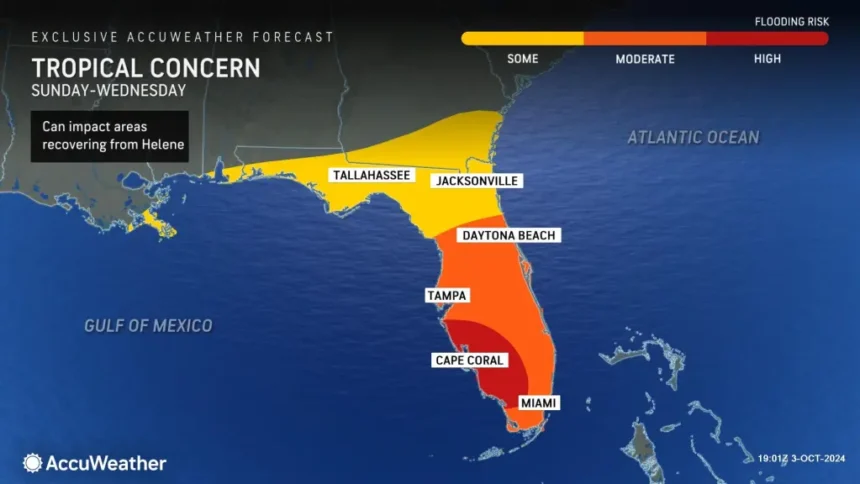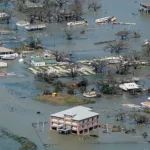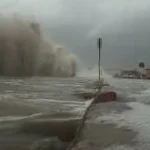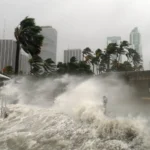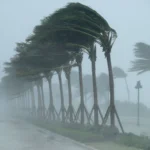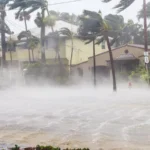As the 2024 hurricane season continues, Florida finds itself in the crosshairs of another major storm. This article provides up-to-the-minute information on the current status of the ongoing hurricane in Florida, offering detailed insights, forecasts, and updates on the storm’s impact on communities throughout the region. We will break down the latest developments and offer safety tips for residents bracing for the effects.
Current Status of the Hurricane in Florida
The latest reports from the National Hurricane Center (NHC) indicate that the hurricane, now classified as a Category 4 storm, is approaching Florida’s western coast at a rapid pace. Meteorologists have tracked the storm over the past week as it gained strength in the Atlantic, and it is expected to make landfall within the next 24 hours.
- Wind Speeds: The hurricane is producing sustained winds of 130 to 150 miles per hour, with gusts reaching up to 175 miles per hour in some areas.
- Storm Surge Warnings: Coastal areas from Tampa Bay to Naples are under storm surge warnings. Water levels are expected to rise 10 to 15 feet above normal tides, potentially flooding low-lying areas.
- Evacuation Orders: Florida Governor has issued mandatory evacuation orders for over 1 million residents in vulnerable coastal communities. Those who remain are advised to seek shelter immediately.
- Rainfall and Flooding: The storm is expected to bring up to 20 inches of rain, leading to flash flooding across central and southern Florida.
Hurricane’s Projected Path and Impact Areas
The hurricane’s trajectory has shifted slightly over the past few hours. While it was originally predicted to hit Tampa Bay directly, it is now expected to make landfall further south near Fort Myers. The hurricane will likely track northeastward across the state, weakening as it passes over land but still bringing significant rainfall and wind damage to areas including Orlando, Daytona Beach, and the Space Coast.
The Cone of Uncertainty continues to shrink, but all Floridians are urged to monitor local weather stations for real-time updates, as the hurricane’s path can still shift slightly in the coming hours.
- 2024 Atlantic Hurricane Season: NOAA’s Above-Normal Prediction
- When is Hurricane Season 2024? Everything You Need to Know
Regions at High Risk:
- Southwest Florida: Towns like Fort Myers and Naples are in the storm’s direct path and will likely experience the worst of the winds and storm surge.
- Central Florida: Areas like Orlando and Kissimmee may see heavy rain and localized flooding, especially in areas prone to poor drainage.
- Eastern Florida Coast: The Space Coast and Jacksonville will experience strong winds and possible tornado activity as the hurricane moves inland and weakens, though flooding is still a concern.
Evacuation Updates and Shelter Information
With mandatory evacuations already in place, authorities have set up numerous shelters across the state. In Miami-Dade County, over 30 shelters have opened, including pet-friendly locations. The American Red Cross and other organizations have also set up shelters in schools and community centers in Tampa, Orlando, and Fort Myers.
- Highways and Roads: Traffic on major highways, including I-75, I-4, and I-95, has been heavy as residents flee the storm’s projected path. Florida Department of Transportation has suspended tolls on all evacuation routes to facilitate the evacuation process.
- Public Transportation: Cities like Miami and Orlando have extended their public transportation services, offering free rides to shelters. Airports in the region, including Orlando International and Tampa International, have canceled hundreds of flights as the storm nears.
Damage and Power Outages
With hurricane-force winds battering parts of Florida, power outages are already being reported. Florida Power & Light (FPL) is working around the clock to restore electricity, but over 200,000 customers are currently without power. It is anticipated that this number will rise as the storm moves inland.
- Utility Workers: FPL has deployed additional crews from out-of-state to assist with repairs, though it could take days, or even weeks, to fully restore power in the hardest-hit areas.
- Infrastructure Damage: Early reports from towns like Sarasota and Fort Myers Beach indicate significant structural damage, with homes, businesses, and bridges affected by the high winds and storm surge.
Safety Tips for Residents in Affected Areas
For those still in Florida or unable to evacuate, it’s critical to take the following safety precautions to minimize the hurricane’s impact:
- Stay Indoors: Do not leave your home or shelter once the storm has started. Even if the eye of the hurricane passes over your area, stay inside as the most dangerous winds often occur right after the calm.
- Secure Your Home: Make sure all windows and doors are closed and secured. Use hurricane shutters or plywood to cover windows if possible.
- Have an Emergency Kit: Ensure that you have enough food, water, and medical supplies to last at least 72 hours. Include items like flashlights, batteries, and first-aid supplies.
- Stay Informed: Keep a battery-powered radio or fully charged phone with weather apps to receive real-time updates from the National Hurricane Center or local authorities.
- Avoid Flooded Areas: Do not attempt to drive through floodwaters. As little as six inches of moving water can sweep away a vehicle.
Government and Relief Efforts
The Federal Emergency Management Agency (FEMA) has pre-positioned supplies and response teams in the region, ready to assist after the hurricane makes landfall. In addition, the U.S. Coast Guard has mobilized search and rescue teams that are standing by to help with post-storm recovery efforts.
Several organizations, including the Red Cross, Salvation Army, and local Florida charities, are accepting donations to help those affected by the storm. Emergency response teams have also been deployed to assess damage in the aftermath of the hurricane.
Looking Ahead: Long-Term Impact and Recovery
Once the storm has passed, attention will shift toward recovery efforts. Florida has a long history of dealing with hurricanes, but each storm presents unique challenges. Residents are advised to:
- Document Damage: Take photos and videos of any damage to your property for insurance claims.
- Follow Local Authorities: Wait for the all-clear from officials before returning to evacuated areas. It may take several days for water, power, and essential services to be restored.
- Be Cautious: Avoid downed power lines, floodwaters, and weakened structures.
As we continue to monitor the storm, Floridians should remain vigilant and prepared. Hurricane preparedness is key to surviving these powerful storms, and following these guidelines will help minimize risks.

